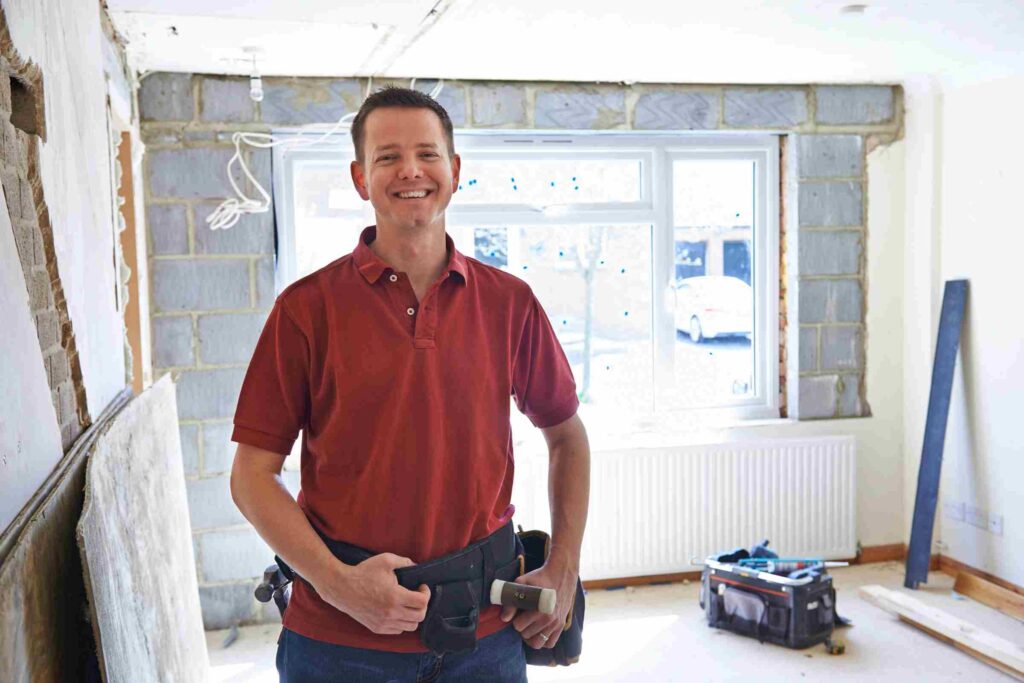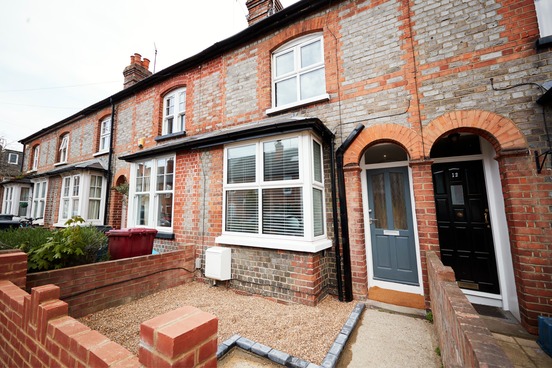
As a landlord, it can be tempting to simply maintain the status quo when your tenants are paying their rent on time. But what if we told you that being more proactive with property maintenance, repairs, and renovations could see your rental property’s value skyrocket?
Savvy landlords are constantly on the lookout for ways to add value to their rental properties to improve tenant satisfaction and boost their bottom line.
In this article, we will find out a little more about why it is wise for landlords to renovate their properties regularly and reveal our top 11 smart rental property renovations for boosting value.
Why Should Landlords Consider Renovating Their Rental Property?
Investing in strategic renovations for your rental property can increase its appeal to prospective tenants, provide current tenants with a better experience, and ultimately enable you to charge more for the property.
In addition to increasing your rental income in the short term, making smart renovations can also increase the long-term value of your investment property. If you plan to sell the property in the future, making regular improvements could help you to fetch a higher sale price later down the line.
Rental properties that are maintained to a high standard are also more in demand, making it easier for landlords to find tenants and reducing the length of time that the property stands empty.
If your rental property is modern, well looked after, and designed to make the best use of space, it tells tenants a lot about you as a landlord. Looking after your property and making the necessary renovations to improve it shows that you care about the property’s condition and the tenants that you rent to. This can help to improve your reputation as a landlord and your relationships with your tenants.
Feeling inspired to make improvements to your rental property? Here’s how to get started.
What Should Landlords Consider Before They Start Renovating Their Rental Property?
Whilst we recommend renovating your rental property, we can’t stress enough the importance of doing some research and planning before you dive in.
Make sure that the renovations you’re considering are smart ones that you’re confident will add value for your tenants now as well as adding value to the property later down the line if you were to decide to sell it.
When deciding the type of renovation that would offer you the best return on investment, the type of tenant you rent to should heavily influence your decision. Consider who it is that you usually rent to and the type of renovation that would make the most difference to their quality of life. Different types of tenants have different needs. For example, for families, the kitchen is often the hub of the home, so having a modern and attractive kitchen diner where everyone can gather and make and eat good food together is a great selling point. If you manage a student HMO where multiple people are living under one roof and sharing a bathroom, then adding additional bathrooms, shower rooms, or en-suites may be a more profitable investment.
It’s easy to get carried away with renovations, so it’s important to set a budget and stick to it. The size of your budget is another important factor to consider when planning a renovation.
Finally, consider the logistics of a renovation. If the work is likely to be very messy or disruptive, then it may not be possible to complete it at a time when tenants are living in the property. If this is the case, then you’ll want to plan things carefully to get the work completed in as short a timeframe as possible to reduce your financial losses.
Top 11 Renovation Ideas for Improving Rental Property Value
We’ve put together a list of rental property renovation ideas to help inspire you to add value to your investment.
Renovating a property sounds like a big and expensive job, but not all renovations cost the world. Sometimes it is the smaller details that make the biggest difference.
We’ve included some smaller, low-budget renovations in our list as well as the more major ones.
Extend Your Property
Ok, so we’re jumping right in with what is, probably, the most expensive renovation on the list! Whilst it’s a pricey one, this is an investment that can add significant value to your property both now and in the future. Extending the kitchen, adding an extra bedroom, a second bathroom or an en-suite can all provide the additional space and comfort that many renters are looking for.
Update the Kitchen
The kitchen is often said to be the heart of the home, providing a space for people to gather and share stories about their day whilst enjoying a meal or a drink together.
An attractive and comfortable kitchen with modern appliances can be a big selling point when showing around prospective tenants.
The amount of work involved in a kitchen renovation will really depend on its current condition and what you are trying to achieve. Do you want to rip the whole kitchen out and start again? Or can you makeover what you already have more affordably?
If the shell of your kitchen is in pretty good nick, then you can probably makeover or modernise the kitchen with a modest budget. Here are some smaller-scale kitchen renovation ideas to try:
- Change the flooring.
- Update the worktops.
- Fit new cabinet doors and/or handles.
- Paint the walls.
- Add a splashback.
Whilst tenants don’t expect high-end finishes in a rental property, using durable materials will ensure the longevity of your investment.
Update the Bathroom
Just like the kitchen, bathroom renovations come in all different shapes and sizes.
If the bathroom is very old or dated then you may want to bite the bullet and replace the whole suite. If the bathroom suite is perfectly fine as it is, then it may be more of a cosmetic makeover that the room is crying out for.
Here are a few bathroom renovation ideas to inspire your project:
- Re-tile the room.
- Replace the flooring.
- Paint the walls.
- Change the toilet seat.
- Change the shower head.
- Change the shower curtain or screen.
- Add more storage or shelves.
If the bathroom is uncomfortably small and pokey, then you could consider getting rid of the bath and installing a walk-in shower in its place to free up some space.
Having multiple bathrooms, shower rooms, or en-suites can add considerable value to a property, particularly if you’re letting your property as an HMO. If you have space to add another bathroom, then this could be a very good investment.

Knock Down Walls
Consider the layout of your rental property and whether the design could be changed to make more of the space you have.
Sometimes, knocking down a wall or two can help to open up spaces and transform dark, dingy, and cramped rooms into bright, spacious, and airy ones.
Knocking down the wall between the kitchen and dining room, or between the dining and living room can create a more fluid and flexible living space that makes it easier to accommodate a variety of different furniture layouts. Open-plan property design has become synonymous with modern-day design and living and is very appealing to many tenants.
This is one renovation that we really don’t recommend that you try to DIY. Make sure you call in the experts to check that the wall you plan on demolishing is not a load-bearing wall and that removing it will not affect the structural stability of the property or you could land yourself in a spot of bother.
Update the Flooring
Flooring can begin to look old, worn, dirty, and tired very quickly in rental properties and there’s nothing more off-putting for prospective tenants than stained or grubby-looking carpets.
If the flooring in your property is looking worse for wear, it could be time to update it. Hardwood flooring often costs more than carpets but can be a worthwhile and cost-effective investment. Not only does it often look more attractive, but it can also withstand heavy foot traffic and spills better than carpet, making it a more practical choice for a rental property.
Give the Interior a Fresh Coat of Paint
Giving your rental property a lick of paint throughout can make the world of difference to its appearance.
A fresh coat of paint can make a property look cleaner, brighter, and more inviting. It will also cover up any scuffs, stains, or other imperfections on the walls, ceilings, or woodwork.
When choosing paint colours for a rental property, stick to a fairly neutral colour palette to appeal to a broad range of renters and to make it easier to coordinate with different furnishings and décor. Popular colours include pale greys, blues, and greens.
Painting your property throughout is one of the easiest and most affordable ways of improving its appearance.
Makeover the Outside of the Property
The outside of your property is the first thing that potential tenants see, so it’s important to make a good first impression.
Ideas for improving your rental property’s curb appeal include:
- Giving the exterior walls a fresh coat of paint.
- Mowing the grass and maintaining any plants.
- Painting woodwork around the doors and windows.
- Maintaining the condition of any garden fences and gates.
- Adding outdoor lighting.
- Adding low-maintenance plants.
You want to aim for the property’s exterior to look smart, tidy, well-maintained, and inviting to make it more appealing to tenants.
Make Outdoor Spaces More Attractive
If your rental property features a back garden or yard, a few small changes could turn a disused area into a functional and inviting outdoor living space, boosting your property’s appeal and value.
When renovating your property’s garden, remember that the space should be as low maintenance as possible. If you want to add some colour or greenery to the garden, be sure that any plants are hardy, low-maintenance varieties like flowering shrubs or herbs.
Build a small patio or decked area and add outdoor furniture and solar-powered lights to create a functional space for tenants to dine outdoors and socialise during the warmer months. An attractive outdoor space like this is an extra perk that will help your property to stand out from others and add value to it.
Add Off-street Parking
Off-road parking can be a big bonus for tenants who drive, particularly if the property is located on a narrow or busy road where it may otherwise be difficult to park.
If there is a disused garden out the front of the property, then you could make better use of this space by tarmacking or paving it and turning it into an off-road parking space. Many renters are willing to pay more for a property that offers the convenience and security of off-road parking, especially families with multiple vehicles.
Improve Energy Efficiency
Saving money on energy bills has been on everyone’s minds this winter, so any changes you can make to your rental property to make it warm and comfortable to live in and help reduce the cost of bills could be a great selling point.
Popular renovations to improve energy efficiency include:
- Swap old, dated, and inefficient windows and doors for new double-glazed ones.
- Upgrade old or inefficient boilers and radiators.
- Add insulation to the loft.
- Draught-proof the property.
As a bonus, improving the energy efficiency of your property will also help to reduce its environmental impact!
Turn Your Property Into an HMO
This renovation isn’t for everyone, but depending on the location of your rental property, if your property isn’t already an HMO (house in multiple occupation), you could substantially increase your rental income by turning it into one.
HMOs are rental properties where three or more unrelated individuals or households share facilities like living spaces, bathrooms, and kitchens. Student houses are a common type of HMO.
If managing an HMO is an avenue you’d like to explore, do your research to find out whether there is demand for HMOs in the area that your property is in and whether the property has the potential to be turned into one.
HMOs are subject to more rules and regulations than your standard buy-to-let and require a bigger time commitment to manage, but they are also usually more profitable as landlords can charge tenants per room rather than per property.
HMOs are subject to some very specific health and safety regulations and minimum room size requirements. Some common renovations that are required to turn a rental property into an HMO include:
- Installing fire doors.
- Knocking down walls to increase room size.
- Turning living spaces into additional bedrooms.
- Adding bathrooms.
Landlords that neglect to make improvements to their rental property will not get the most out of their investment. Making smart and strategic renovations to your rental property can help you to position yourself for long-term success in the competitive rental market.




